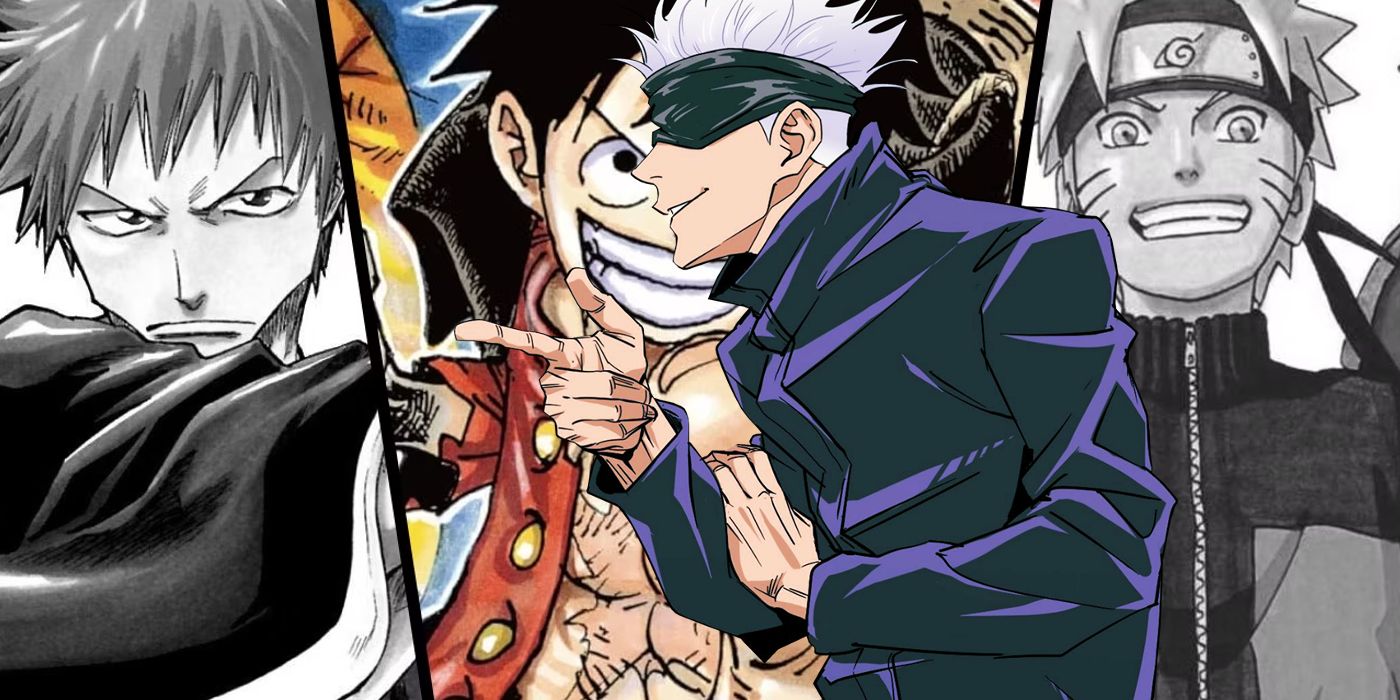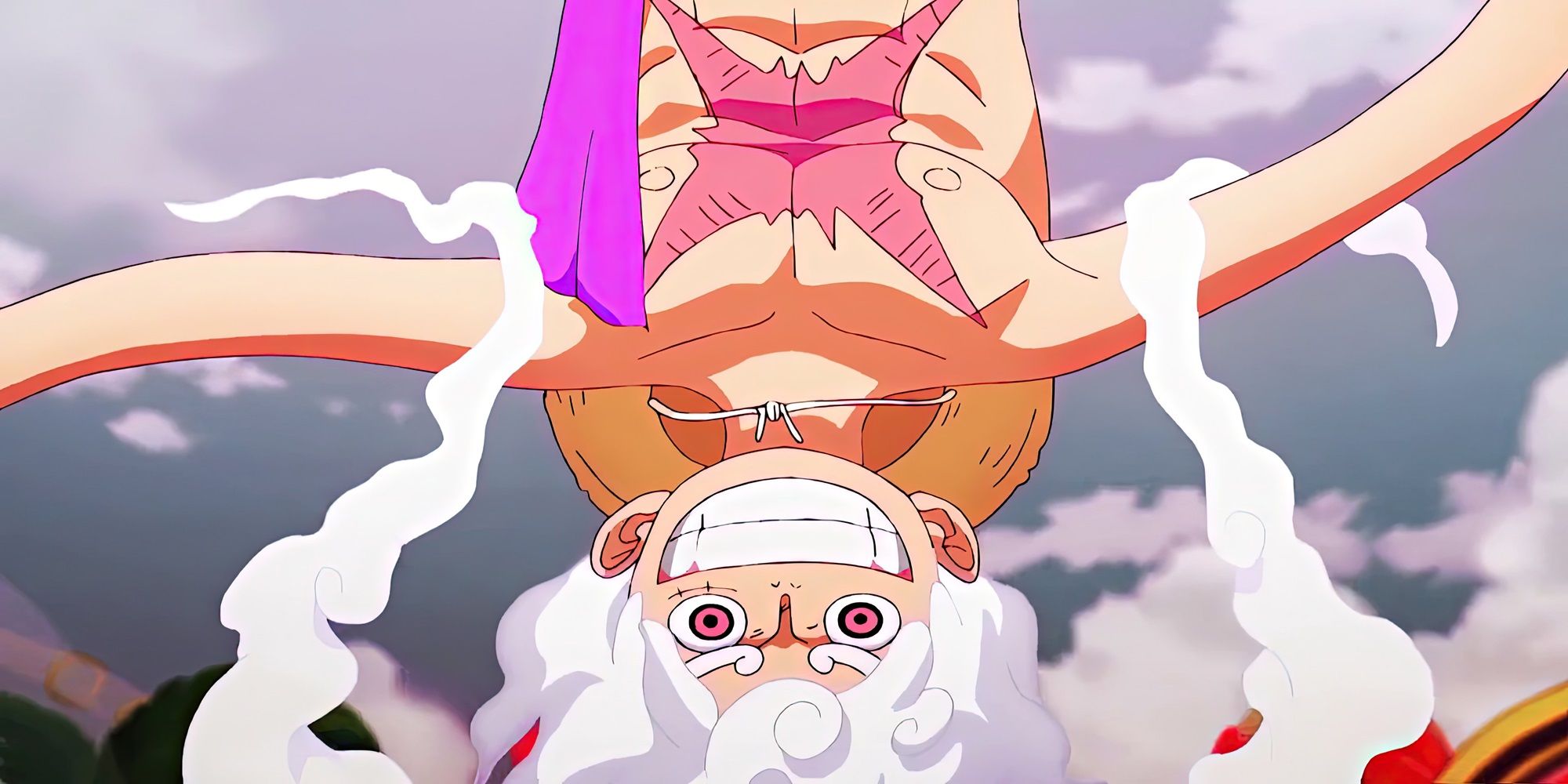Quick Links
Summary
- The original shonen "Big Three" remains unmatched despite new series successes, reaching over 900 million copies.
- Bias and hype influence the labeling of different "Big Three" series, leaving out successful manga like Kingdom.
- Assigning "Big Three" labels overlooks various great series, leading readers to miss out on diverse manga options.
Anime and manga have become increasingly popular in North America and abroad outside of Japan in the past several decades. Still, one classic marker of ultimate success is being labeled a "Big Three" series. Traditionally seen as a label for Shueisha's immensely popular Weekly Shonen Jump, the prevailing popularity of One Piece, Naruto, and Bleach have collectively sold over 900 million copies, yet the world of manga is different. The Big Three terminology may become outdated in an increasingly saturated market where these successes are becoming more common.
This is to say, none of the Big Three series themselves are irrelevant, but rather, the term is becoming more clearly an artificial standard to which new series are held. It becomes increasingly troublesome when other manga demographics are given a Big Three label, and certain biases begin to show, overlooking massive sales and critical acclaim.
Manga is meant to be accessible to everyone, yet the collective desire for hype and determining the most popular series creates a troublesome trend that needs to go.

Jujutsu Kaisen's Superbowl Spot Proves It's Time To Update The "Big Three"
Jujutsu Kaisen's incredible new Super Bowl advertisement confirms the series' mainstream success, meaning it's time to update the "big three" list.
The Original Big Three Are Still Unmatched
While Other Series Match Sales, These Manga's Legacies Continue to Resonate
Weekly Shonen Jump captured lightning in a bottle between the late 1990s and early 2000s with One Piece, Naruto, and Bleach. Despite Naruto's sequel series and Bleach's phenomenal anime adaptation, One Piece's continuous run creates a lopsided podium, with One Piece moving half a billion copies, more than Naruto and Bleach combined. The fact that these three series ran concurrently created an incredible opportunity for the brand to expand, and that's what Shueisha did, with momentous cases like a greater push in the West.
Despite Naruto's sequel series and Bleach's phenomenal final arc anime adaptation, One Piece's continuous run creates a lopsided podium, with One Piece moving half a billion copies, more than Naruto and Bleach combined.
This manifested in establishing Shonen Jump magazine, a monthly periodical for manga fans in North America who could read the most popular series from Shueisha's flagship. Anime adaptations continue to generate massive success, and the lasting popularity of series like Boruto directly reflects the carrying over of fans into new series due to the original Big Three's legacy. New series continue to operate in the shadows of these stories despite, in some cases, having impressive or even groundbreaking successes.
Contemporary Big Three Shonen Series Show Several Biases
Given the Weekly Shonen Jump Origins, It's Unsurprising
Despite One Piece being the only Big Three manga series still running, although Boruto can technically be lumped into Naruto's sales, other series have either met or exceeded the benchmarks of the Big Three's success. Cases include Attack on Titan's 140 million copies, as Kodansha's Bessatsu Shōnen Magazine reports, or more modest yet sustainable smash hits like Hajime no Ippo and Baki the Grapper's 100 million copies sold. Yet, the most recent Big Three designations include the following:
The Dark Trio
- Jujutsu Kaisen
- Chainsaw Man
- Hell's Paradise
The "New" Big Three
- Jujutsu Kaisen
- Demon Slayer
- My Hero Academia
It's undoubtedly good news for Jujutsu Kaisen fans and an essential reminder of the massive success of Demon Slayer while indicating a tonal shift towards darker niches, superheroes, and sorcerers. While there's a decent variety of options here, there's an undeniable bias, typically by fans, toward the hype of the Shueisha series, despite cases like Blue Lock being the best-selling manga of 2023 and Frieren outselling all but Jujutsu Kaisen so far this year. What's especially puzzling about this, however, is how quickly that bias is turned on its head when other demographics show their Big Threes.
The Seinen "Big Three" Shows Glaring Biases
Massively Successful Manga Are Often Overlooked
Naturally, the propensity for hype in the manga world favors action series for the shonen demographic, but the Big Three designation gets more interesting outside this bubble. Take, for instance, the Seinen Big Three, a designation for three revolutionary series that are literary classics in their own right: Berserk, Vagabond, and Vinland Saga. None of the three are finished, and even sales numbers aren't the ultimate determining factor, as Anime News Network shows Vinland Saga having sold only 7 million copies. Vagabond's creator is potentially happy with never finishing his series, too.
One can argue that Big Three manga series are a combination of culturally relevant, frequently-discussed series with massive sales achievements, yet this frequently leaves out one vital player: Kingdom. Interestingly, Kingdom is the only Shueisha manga of this group, published in Weekly Young Jump alongside Oshi no Ko, and more interestingly, it's outsold all three series since its 2006 debut with 100 million copies, with a far more consistent schedule. Yet, it's not a Big Three manga, and perhaps it's because Kingdom's manga is not distributed in North America, despite its enormous success.
The thread continues to unravel when other seinen series also perform strongly, with Oshi no Ko and The Apothecary Diaries each selling well over the current calendar year. While Vinland Saga deserves every bit of recognition it has, it's hard to deny its strange seeing it among the Seinen Big Three alongside Vagabond's 82 million copies and Berserk's 80 million copies when The Apothecary Diaries outsells it nearly five times over. However, the heavily philosophical, cerebral aspects connecting these three are likely the common element, along with their tortured male protagonists and undeniably excellent stories.
To Assign Big Three Labels Overlooks Other Great Series
Hype Can Blind the Reader to New Experiences
It's important to note that even though Demon Slayer is mentioned in the discussion of Big Threes, it's not nearly as widely recognized despite its incredible 150 million copies sold, and Demon Slayer: Kimetsu no Yaiba – The Movie: Mugen Train generating half a billion at the box office. Yet, fans don't need a "Big Three" label to recognize the series' greatness. In many cases, they might see its current cultural relevance override the original Big Three's success. It can be fun, however, to decide what other demographics have similarly monumental franchises.
After all, if sales were the sole metric for Big Three consideration, fans could miss out on Vinland Saga, which is an upsetting premise.
For instance, before the shonen Big Three, similar contenders from previous eras include Dragon Ball, Slam Dunk, Yu Yu Hakusho, and Hunter x Hunter. Shojo fans can likely agree with a hierarchy of Sailor Moon, Cardcaptor Sakura, and Fruits Basket/Ouran High School Host Club, but this depends on whether readers count Nana as shojo or josei. This exercise, while entertaining, inevitably overlooks a great or potentially better series. After all, if sales were the sole metric for Big Three consideration, fans could miss out on Vinland Saga, which is an upsetting premise.
Assigning Big Three labels puts the blinders up to series that fall out of that umbrella. While shonen action manga is everywhere, massive critical and sales successes exist, like Blue Box in Shonen Jump, for readers not interested in the series guaranteed to build that hype. At the same time Kagurabachi seems destined for the next Big Three. Yet, with so many series outselling these and the fandom growing and diversifying beyond Shonen Jump, it's critical to remember: manga isn't niche anymore; it's for everyone, and Big Three collectives limit its incredible scope, whereas they should function more as a gateway.
Sources: Bessatsu Shōnen Magazine, Anime News Network
"manga" - Google News
June 17, 2024 at 05:00AM
https://ift.tt/HufT4UD
Why the Big Threes of Manga Are Inreasingly Irrelevant - Screen Rant
"manga" - Google News
https://ift.tt/IRzj1Sx
https://ift.tt/837uX1V
Bagikan Berita Ini


















0 Response to "Why the Big Threes of Manga Are Inreasingly Irrelevant - Screen Rant"
Post a Comment